Executive Summary
Marketing design and innovation has gained massive relevance in the electronic industry where competition has reached the cut-throat levels. The Smart TV industry is one of the most affected industries where firms are fighting to retain their competitiveness. Samsung Smart TV is one of the products that have found themselves in this competitive environment.
The marketing team of Samsung has been coordinating closely with the production unit to ensure that the design, colour, shape, and functionality of the product meet the needs of the market. The marketing approach taken by the firm must be innovative enough to appeal to the emotions of the customers in order to influence the buying decision. Strong brands are very helpful in such competitive environments.
Introduction
The field of marketing has undergone a massive transition over the years as various changes take place in the global market. According to Trott (2005, p. 89), firms have come to realize that they no longer hold the power of deciding what to deliver in the market. In the past when there were few players in various industries, firms had massive powers, and consumers had to accept what was presented to them.
However, this changed as the market started getting competitive. It was clear that firms had to go beyond offering the normal products to the market. They had to be unique in their product offerings in order to gain competitive advantage over others. They realized that before producing any product, they had to get the opinion of the consumers in order to present to them what will offer them maximum satisfaction.
Marketing changed from an inward-out approach to an outward-in strategy. Only the best could survive the intensity of the competition and firms in different industries struggled to outsmart their competitors. The electronic industry has experienced a stiff competition, not only because it is at the heart of the emerging technologies, but also because of the nature of the customers.
Firms in this industry have been struggling to come up with new products that can help them attract the attention of the market. This has given rise to the marketing design and innovation. According to Von (2003, p. 56), firms have embraced innovation as a way of developing unique products in the market that can meet the demands of customers.
This scholar also says that customers have become so sensitive of the product design when making their purchases. The shape, colour, design, imagination, relevance, usefulness of the product will define the possibility that a customer will purchase a given product.
The recent introduction of the Smart TV by various electronic companies is a clear indication that firms have come to appreciate the relevance of the marketing design and innovation in their production strategies. This research will focus on analyzing the marketing design and innovativeness of Samsung Smart TV.
Critique of Television Sets Features, Benefits and Values
Samsung is one of the most successful electronic companies that have been able to retain its attraction both in the developed and developing economies. It is one of the top brands in the electronic industry, always coming up with new products in different designs that go beyond customers’ expectations.
The company plunged itself into the field of Smart TV as a way of asserting its position as a leading company in this industry. This product has been considered unique because of its features. Below is a diagram of Samsung Smart TV.
Samsung Smart TV
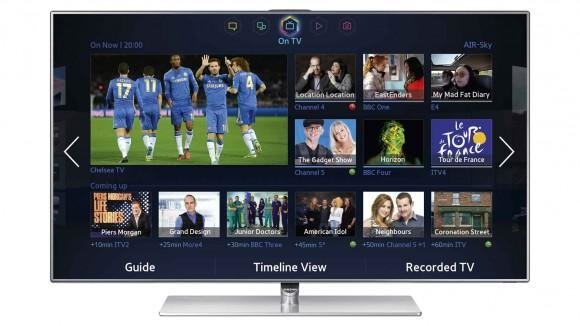
As shown in the diagram above, this is more than a television set. It is a whole system of entertainment brought together. The second diagram below is the best graphical presentation of the features of this digital entertainment machine.
Features of a Samsung Smart TV
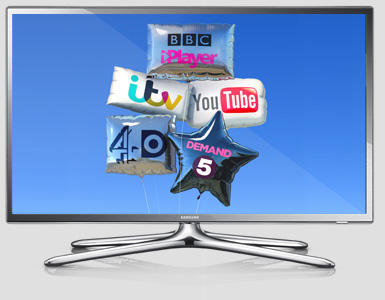
In defining features of a Smart TV, Rosellina, Amna and Matherly (2013, p. 67) says, “It has a higher focus on the online interactive media, Internet TV, over-the-top content, on-demand streaming media, and home networking access.” Basic feature of this product is that it is a television set that has all the features of a conventional television set.
However, it has other integrated features that make it unique from a television set. It supports the interactive media. This means that one can use it to access the social media such as Facebook, Tweeter, and YouTube. Its ability to support the streaming media means that the user can easily watch any online entertainment by streaming it live. It offers numerous benefits to the user.
One can easily download a video and store it within the system for future viewing. It is also multifunctional, meaning that as a person watches news on BBC, he or she can record events taking place at CNN so that he or she can watch it at a later time. This high value makes it a unique product in the market.
Critical success factors, phases of innovation, and timeline
Development of the Smart TV can be traced to way back in 1994 when the first patent was registered by a group of electronic engineers in the United States. However, its real impact started taking shape in 2010 when major companies started commercializing the product after successfully testing the models. It is also important to analyze phases of innovation and critical success factors in this industry.
The path towards Smart TV has been long and bumpy as firms struggle to develop unique products. According to Baxter (1999, p. 46), the path taken by the leading electronic firms to arrive at Smart TV is closely connected to the path that was taken to come up with the Smartphone.
From traditional television sets, most companies realized that it was necessary to develop more superior products for their customers. The initial issue about the design that had to be addressed at the early stages was about the shape.
The cathode-ray tube television sets were occupying a huge space in an environment where space was an issue. The development of plasma screen television sets was a critical success factor when addressing the issue of space. Then the companies realized that customers needed more in their television sets other than the TV and AV functions. They came up with radios.
However, this did not receive massive acceptance as it did when the radio was introduced on phones. The invention of LCD was another critical success factor in this development process. It had superior features than the plasma TV. LED was the second last stage. Finally, there was the Smart TV with superior functionality as those that have been described above.
Samsung has been very active in the various stages described above, and it is currently one of the major manufacturers of Smart TVs. Although this product is not available in most homes, it is an indication of a major success that has been made in this industry.
Analysis
Comparison of Leading Brands of Television Sets and Their Design Factors
Some of the top electronic brands have been keen to develop Smart TVs as a way of tapping into this rich field that has received positive reception from customers.
According to Bidault, Despres and Butler (1998, p. 478), most of the electronic companies that have ventured into the manufacture of this product have their own unique designs that they have embraced, with some having higher performance features that others.
Samsung is one of the leading companies that have been very successful in this industry. Although the functionality of its Smart TVs is slightly different from that of other brands, the physical designs of these Smart TVs are almost the same. They have embraced the ultra-thin model using LED technology.
Samsung Smart TV has a diamond colour, with a touch-screen and qwerty-keyed remote control that enables the user to easily type, when looking for information on the internet. According to Cimpu (2013, p. 45), the 75-inch Samsung’s Samsung D9500 remains the largest Smart TV in the market. At this stage, it would be necessary to analyse the top six brands of Smart TVs in the global market.
LG Smart TV has been viewed by many critics as the best Smart TV in the market in terms of the functionality and the value it offers.
Its heavy downloading capacity makes it one of the most favourite Smart TVs among the internet savvy individuals. It can also identify and inform the user about specific sites where data being downloaded is obtained. The following diagram shows the physical design of an LG Smart TV.
LG Smart TV
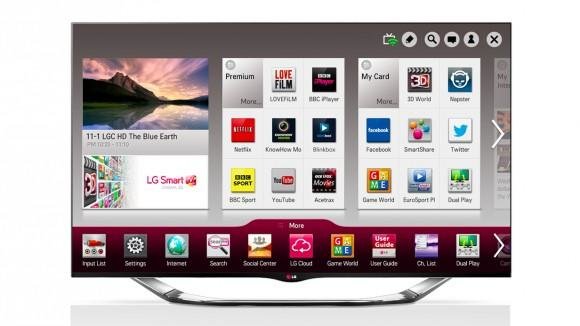
As can be seen from the above image, it is clear that this Smart TV has more functionalities than a conventional television set. Besides offering basic television channels, this television allows users to access interactive media such as Facebook, Tweeter, and YouTube. Other online services such as e-market can also be accessed through this website.
The Panasonic Smart TV brand shown has been one of the most successful Smart TV brands in the market. The Panasonic Smart Viera seeks to offer its users a unique ability to use various functions at the same time.
As shown in the figure below, the screen can be partitioned by the user so that different functions are allowed to run simultaneously. It means that when using this electronic, it is possible to watch live football while charting with a friend on Facebook and downloading movies from the YouTube.
Panasonic Smart Viera
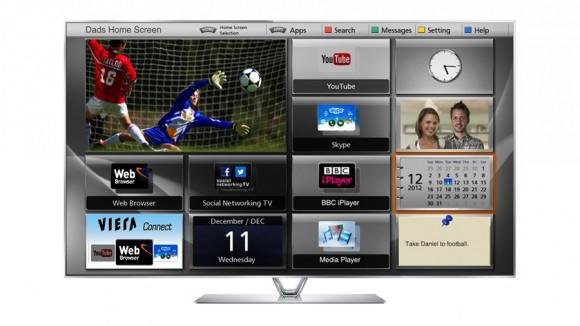
Sony Smart TV, also known as Sony Entertainment Network, is one of the best Smart TV brands in the market. The figure below shows a picture of a Sony Entertainment Network.
Sony Entertainment Network
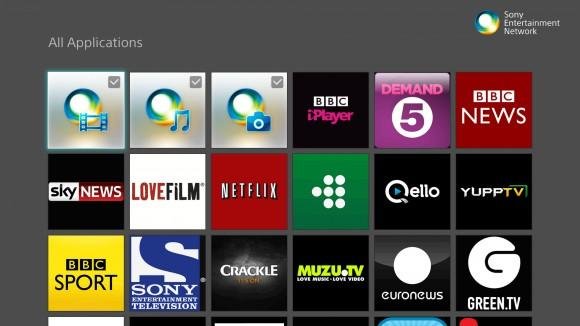
As the name suggests, this television seeks to offer maximum entertainment to the users.
When describing functionality of Sony Entertainment Network, Roedy and Fisher (2011, p.) say, “The product is built around impressive video unlimited and music unlimited services, BBC iPlayer, Demand 5, Lovefilm, Netflix, BBC News, library, BBC Sport, a Sony-branded channel of 3D content, Sky News, YouTube, Twitter, Facebook, Picasa and Skype.”
It means that this product offers much more to the users. The marketing unit of this company and the production department worked very closely to come up with a product that goes beyond the expectations of the customers.
According to Trott (2005, p. 82), in the current market, the only way of staying ahead of market competition is to be able to provide quality services that goes beyond the expectations of the customers. This is what Sony’s Smart TV sought to achieve in this new product.
The Toshiba Smart TV, also known as Toshiba Cloud TV, is another successful Smart TV brand that has achieved massive success in the market. The television is ultra thin because of the issue with the spacing. Besides allowing users to use the social media, it also has the functionalities of Live Sport TV, i-Concerts, Daily motion and much more functions.
It has a calendar that can be displayed on the screen whenever the user finds this necessary. For the iOS users, the Toshiba Cloud TV app can be a functionality that can be used to improve the experience of using the product.
However, it is important to note that users of this product have criticized it for messy accounts and a problem with pairing the codes or password. For this reason, this product is poorly rated as compared to other products in the market such as LG and Samsung. The figure below shows Toshiba Cloud TV.
Toshiba Cloud TV
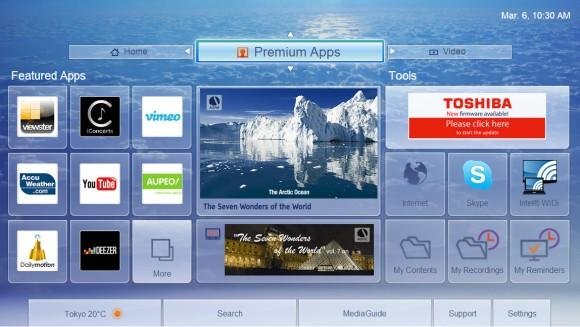
Another leading Smart TV brand is Phillips. Its functionality varies a little from that of Samsung and LG. Although it has the capacity to download information from the internet, it lacks the capacity to inform the user about the details of the site from which the information is obtained.
However, it shares other functionalities such as allowing users to browse the internet, use the interactive media, download music from the internet and store them for future use. The figure below shows an image of a Phillips Smart TV.
Phillips Smart TV

When analyzing the design of the six top brands of Smart TVs, one thing that comes out clearly is that all of them have embraced the need for this product to be ultra-slim. The main difference in design that comes out, as shown in the diagrams above, includes the shape of the stand and their color. However, other features are pretty much the same.
Design and Innovation of Smart TV
According to Norzalita and Norjaya (2010, 181), the design and innovation would always define the competitiveness of the product in the market. As customers find themselves presented with products with nearly similar functionality features, they are now focusing on the design of the products as a way of determining their superiority.
They look at issues such as product’s shape, colour, and style when choosing the product. Samsung has been very sensitive in defining the design of its products. According to Keller, Sternthal and Tybou (2002, p. 9), there is always a general assumption among the consumers that the superiority of the product’s design has a close relationship with the service it renders.
This means that a product with a superior design will always be assumed to have a superior value than others with simpler designs. Given the similarity of these products in terms of their functionality, most companies are currently using the differentiation strategy as a way of making their products unique in the market.
Firms have to realize that consumers use these designs to rate these products. For this reason, while designing the unique functionality of the products, these firms must remain very innovative on issues such as shape, colour and other attributes of the product.
Product and service process
The analysis above clearly shows that when designing a product, it is very crucial to pay attention to some of the external features that some companies may be tempted to ignore. This is so because in marketing, these physical attributes play an important role. These factors are critically discussed below.
Shape, colour, design, imagination, relevance, and usefulness
It is now clear that the shape and colour of a product plays a pivotal role in determining the ease with which it can be marketed among different classes of consumers. Customers pay attention to the finishing touches of a product. Samsung has been keen in defining these factors in their product.
The image below is of Samsung Smart TV demonstrating the shape, colour, and design used on the finished product. The Colour Theory of Design holds that different colours evoke different emotions among the customers.
The Shape, Colour and Design of Samsung Smart TV
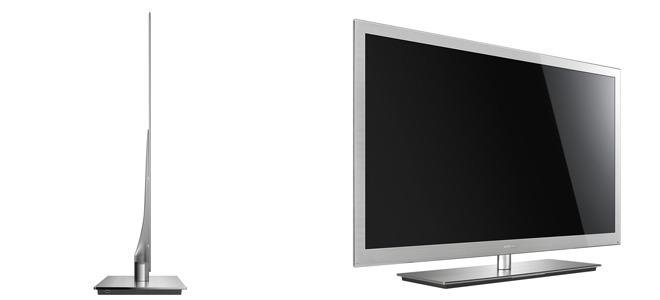
In its design, the firm was keen on developing an ultra-thin product as shown in the first diagram. It shows that it is space conscious. The second diagram shows the diamond colour and the shape of the screen. It demonstrates imagination of the developers, and relevance of the product in a world where space is increasingly becoming scarce in many homes.
It demonstrates the usefulness of the product, not just because of its functionality, but also because of the consumption of the space. The product design is always an output of an imagination. The invention of a Smart TV and its design was an imaginative work that was based on the premise that the final product should address the issue of space, and functionality of the product.
This explains why the product has integrated functions of so many electronic gadgets into its system. The relevance of the applications found on this television and its usefulness will depend on the individual user. For instance, this product eliminates the need for a personal computer.
However, for it to be relevant to the consumer, then the person must be a user of the personal computer. For an old man who only needs to watch BBC news and other simple forms of entertainment, this sophisticated product may be of little benefit to them. However, the youths who are heavy users of social media, live sporting events, and heavy data storage, this product is very relevant and highly useful.
Style, form, reparability, conformance, performance
The style, form, reparability, conformance, and performance are other attributes that customers will be looking for in the products they purchase in the market. Samsung has been very keen on the style, form, and functionality of their products. The figure below is an image of Samsung Smart TV being launched in the market.
Style and Functionality of Samsung Smart TV
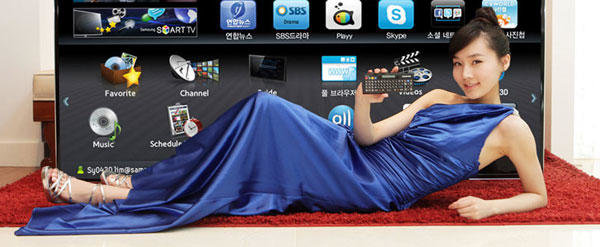
The presence of a lady in this advert is just to emphasise on the sheer size of this television. It shows that the lady could fit perfectly well in the screen if this were possible. In essence, it is telling the consumers that they will be watching images in their real sizes.
The screen also informs the consumers of the variety of the functions that they can perform with this product. The qwerty-enabled remote control held by the lady in the advertisement is an indication that this Smart TV has the features of a personal computer. However, it is important to note that most of the Smart TVs have had issues with their reparability.
According to the market research by Rosellina, Amna and Matherly (2013, p. 54), Samsung Smart TV has been regarded by most of the users as a high performance product. It is easy to use with very simple manuals to enable the user to understand the sophistication of the product.
The product can also be repaired easily in the approved Samsung outlets in the global market. However, there have been limited cases of customers seeking repair for this product, and this means that the current data may not be substantial enough to form a basis of a conclusion.
Gestalt Ratio Theory
In marketing, it is always necessary to use the underpinning theories to explain some of the phenomena in the market that would define consumer behaviour. In design, Gestalt Theory of Perception is one of the widely used theories that helps explain how designers always seek to achieve visual satisfaction out of their products.
Gestalt Theory of perception defines ground-object relationship and various principles about product design (Kelley 2001, p. 89). One of the most important principles of Gestalt ratio is the Golden Ration System. It involves coming up with symmetrical shapes out of a product. This would be a clear indication that the product’s design is based on some definite shape.
This is specifically meant to be appealing to the eye when one looks at the product. The symmetrical shape should be achieved by dividing the product into two equal shapes by dividing it into two equal parts from whichever angle. Other smaller symmetrical shapes can also be achieved out of the product as demonstrated in the product below.
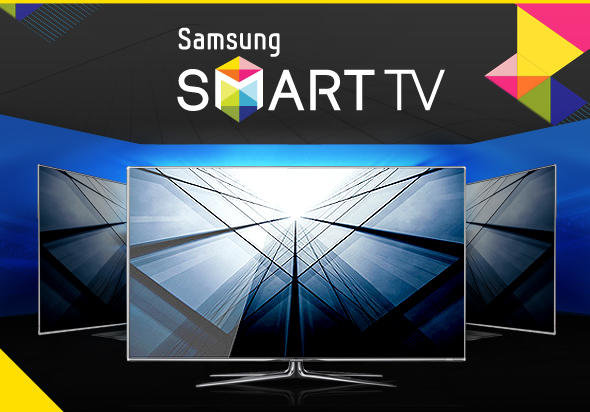
The figure above shows that Samsung Smart TV has various symmetrical shapes from various angles. This is an important factor in defining the beauty of a product from the perspective of customers.
Market Penetration and Segmentation
In order to be successful in the market, Samsung must define a clear market penetration strategy. This must start with a clear definition of the market segment that is targeted. This will help avoid cases of making general promotions that may fail to reach the intended audience. It is important to use some theories when defining the market segment.
One of the underpinning theories that can be used at this stage is Maslow’s Hierarchy of Needs. The marketing unit of Samsung must realize that the market is very competitive, and that marketing programs must be very specific. Samsung Smart TV cannot be a product targeted for the individuals who are struggling to meet psychological or security needs as defined in the Maslow’s Hierarchy of Needs.
This is the best product in the market currently with features meant to offer more than what a conventional television offers. This means that it is a product for people who have achieved self-actualization or approaching it. For this reason, the targeted segments of this product are the upper class and the upper middle class members of the society.
After defining the market segment, the marketing unit must define the positioning strategy (Jolly 2005, p. 45). The Consumer Buying Decision Process Theory will be very useful at this stage. This theory will help the marketing unit of Samsung understand the decision making process of the buyer. This involves understanding some of the basic facts that defines the decision that the consumer will make in the process.
The positioning strategy should be developed only after understanding some of these factors valued by the consumer that will make him or her make decisions on the products to buy and those that should be avoided. It is important to note that some consumers are largely attracted to a product simply because of its physical design. Others would want more than just the physical attractiveness of the product.
Such customers may ignore the physical appearance and pay more attention to the functionality of the product. Samsung Smart TV must be an all rounded product that would offer an appeal to the customers with varying needs. This product should be positioned in terms of its functionality, space consciousness, and the physical attraction.
The marketing management unit should then define the most appropriate communication strategy that would help reach the target audience. Social media platforms such as Facebook, Tweeter and YouTube can be very useful.
The mass media such as television adverts and newspaper adverts should not be ignored. It is important to note that Samsung’s performance in the market is impressive. The product positioning was done successfully, and the firm has maintained a massive campaign for this product using both the mass and social media.
Brand Appeal in Relation To Competitors
In a highly competitive market, firms are always under massive pressure to come up with ways of making their product unique from other existing products. The best way of differentiating product is to use brand. Samsung Smart TV is operating in a highly competitive environment where the products share so many features.
The level of competition in this industry has gotten so stiff that firms are relying on the strength of their brand to gain competitive advantage over competitors. The products are also so similar that customers are using the brands as one of the ways of differentiating them. Below are the images of some of the top brands in this industry.
Haier Smart TV (Haier Brand)

Apple Smart TV (Apple Brand)
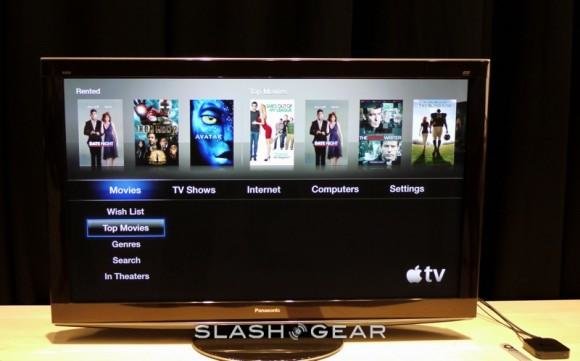
Samsung Smart TV (Samsung Brand)
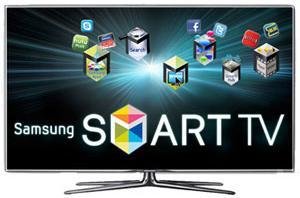
Roku Smart TV

Net-Range Smart TV

Branding is one of the best ways of gaining competitive edge in the market over market rivals. As shown in the six images above, different brands use different innovative features to attract the appeal from the customer. It is clear that there are numerous brands of Smart Television in the market. Customers pay a lot of attention to the brand that is presented to them.
They always base their buying decisions on the brands that are known to offer quality products. For instance, the brand Net-Range is very new to many of the consumers in the market. It does not have a history, which means that customers cannot attest to its quality. Consumers are always weary of such products. They prefer brands that are known to them.
However, it is Samsung brand is one of the highly valued brands in the electronic industry. This has given its Smart TV an edge over most of the market competitors. It means that in the above identified brands, Samsung should only be weary of the Apple Brand. Apple is one of the brands known for its focus on quality of its products.
Brand meaning, brand equity, brand awareness, image, and relationship
According to Rust, Zeithaml and Lemon (2004, p. 10), brand is one of the most important components of the product that should be given emphasis when developing marketing programs. The brand name and brand image helps in the identification of the firm’s product in the market. The brand name Samsung and its logo are very popular in the market.
The firm has also been keen on developing brand awareness in order to popularize the product in the market (Dussauge and Garette 1999, p. 176). The brand strategy helps a firm develop a firm grip on its customers in order to gain a competitive edge over its competitors. According to Rosellina, Amna and Matherly (2013, p. 89), brand awareness refers to the level at which a given brand is known in the market.
Some of the top brands like Samsung are widely known in the market for various other electronic gadgets. However, Rust, Zeithaml and Lemon (2004, p. 89) warns against ignoring the need for constant awareness creation. At no point should a firm cease maintaining awareness campaign in the market, especially when there is a new product in the market.
Quality, cost, status, performance, differentiation
The cost of the product is always closely determined by its quality and performance. Samsung Smart TV is fairly priced as compared to its competitors, but it has some of the best features in the market. The firm has also tried to bring differentiation on the product using the logo, design, colour, and functionality. The quality of the product should be used to define the cost of the product in the market.
The brands of Smart TVs mentioned above have varying costs based on the brands and the functionality of the product. This means that a 51-inch Samsung Smart Hub will cost differently from a 51-inch LG television.
When defining the cost of a product, it is important to pay close attention to the capacity of the buyers and their view of the product. When the buyers have a higher purchasing power, they tend to assume that expensive products are of higher quality than cheaper products. This factor should be taken into consideration when developing the price.
Innovation Centred-First to Market
The marketplace has changed so much that traditional forms of marketing may not offer the desired solution to firms operating in a competitive industry as Samsung. Innovation-centred approach is the best approach that can be used by Samsung in order to gain competitive approach.
This means that the firm must develop marketing ideas that would be emotionally appealing to the customers (Jerrard, Hands and Ingham 2002, p. 121). The ability to appeal to the emotions of the customer can make the much needed difference when customers are making their purchases.
Kotler’s Six Meaning, Brand Pyramid, Brand Resonance
According to Roedy and Fisher (2011, p. 81), “The most distinctive skill of professional marketers is their ability to create, maintain, protect, and enhance brands.” In order to achieve this, a firm must be able to be able to understand six meanings of a brand as defined by Kotler.
They include brand attributes, values, benefits, culture, personality, and user. Each of the six brand meanings has been given emphasis by Samsung in its new Smart TV model. The brand resonance pyramid can best be explained using the image below.
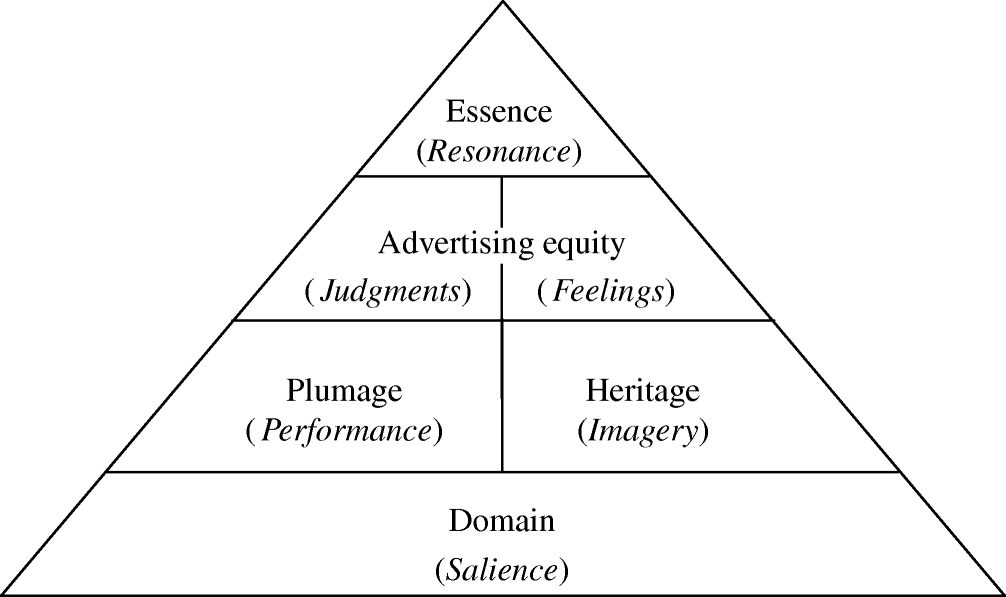
Source (Jordan 2000, p. 79)
In the first layer, the concern of Samsung Company would be to establish brand identity. In the second layer, would involve giving meaning to the brand. The third level involves consumer response to the brand, while in the last tier the focus will be on developing customer relationship.
Patents and Trademarks Registered for Protection
In the field of design, patent and trademarks are very important. It takes massive efforts, resources and time to come up with a new design in the market. The process of coming up with Smart TV took several processes for different companies and that is why different brands of Smart TVs have some sense of uniqueness.
Protecting these new designs using patent rights enables a firm to protect its intellectual property. Brands also need to be patented to protect them from piracy or any form of misuse. Below is the brand name and logo of Samsung.
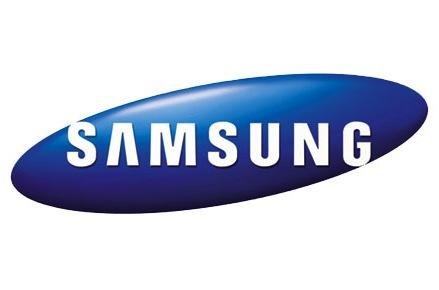
The name and logo are patented and no firm can use the above brand unless it is done under mutual agreement with Samsung. All the products of this firm, including Samsung Smart TV use this logo in the market.
Conclusion
Smart TV has been seen as a revolution in the field of innovation technology. Many companies have entered this field, making it one of the most competitive market segments. Samsung is the leading player in this industry, with products specifically designed to meet the customers’ needs.
The design of the product plays a pivotal role in determining whether or not customers may make the purchase of the product. When faced with similar products in the market, customers base their buying decision on the shape, colour, size, design, price, and the brand of a product. These features must be closely monitored by the marketing team of Samsung to help the firm remain competitive.
List of References
Baxter, M 1999, Product design: practical methods for the systematic development of new products, Stanley Thornes, London.
Bidault, F, Despres, C & Butler, C 1998, Leveraged Innovation: Unlocking the innovation potential of strategic supply, Macmillan, Basingstoke.
Cimpu, O 2013, R&D for Smart TV, New York: LAP LAMBERT Academic Publishing.
Dussauge, P & Garette, B 1999, Cooperative Strategy: Competing successfully through strategic alliances, Wiley, Chichester.
Jerrard, R, Hands, D & Ingham, J 2002, Design Management Case Studies, Routledge, London.
Jolly, A 2005, From Idea to Profit, Kogan Page, London.
Jordan, P 2000, Designing pleasurable products: an introduction to the new human factors, Taylor & Francis, London.
Keller, K, Sternthal, B & Tybou, A 2002, Three Questions You Need to Ask About Your Brand, Harvard Business Review vol. 2. no. 1, pp. 1-10.
Kelley T, 2001, The art of innovation, Harper Collins Business, London.
Norzalita, A & Norjaya, M 2010, Analyzing the Brand Equity and Resonance of Banking Services: Malaysian Consumer Perspective, International Journal of Marketing Studies, vol. 2. no. 2, pp 180-185.
Roedy, B & Fisher, D 2011, What makes business rock: Building the world’s largest global networks, Wiley, Hoboken.
Rosellina, F, Amna, K & Matherly, T 2013, Look at Me! Look at Me! Conspicuous Brand Usage, Self-Brand Connection, and Dilution, Journal of Marketing Research, vol. 50. no. 4, pp. 477-488.
Rust, R, Zeithaml, V & Lemon, K 2004, Customer-Centered Business Management, Harvard Business Management, vol. 9. no. 1, pp. 1-11.
Trott, P 2005, Innovation Management and New Product Development, FT Prentice Hall, Harlow.
Von, S 2003, Managing Innovation, Design and Creativity, John Wiley, Chichester.